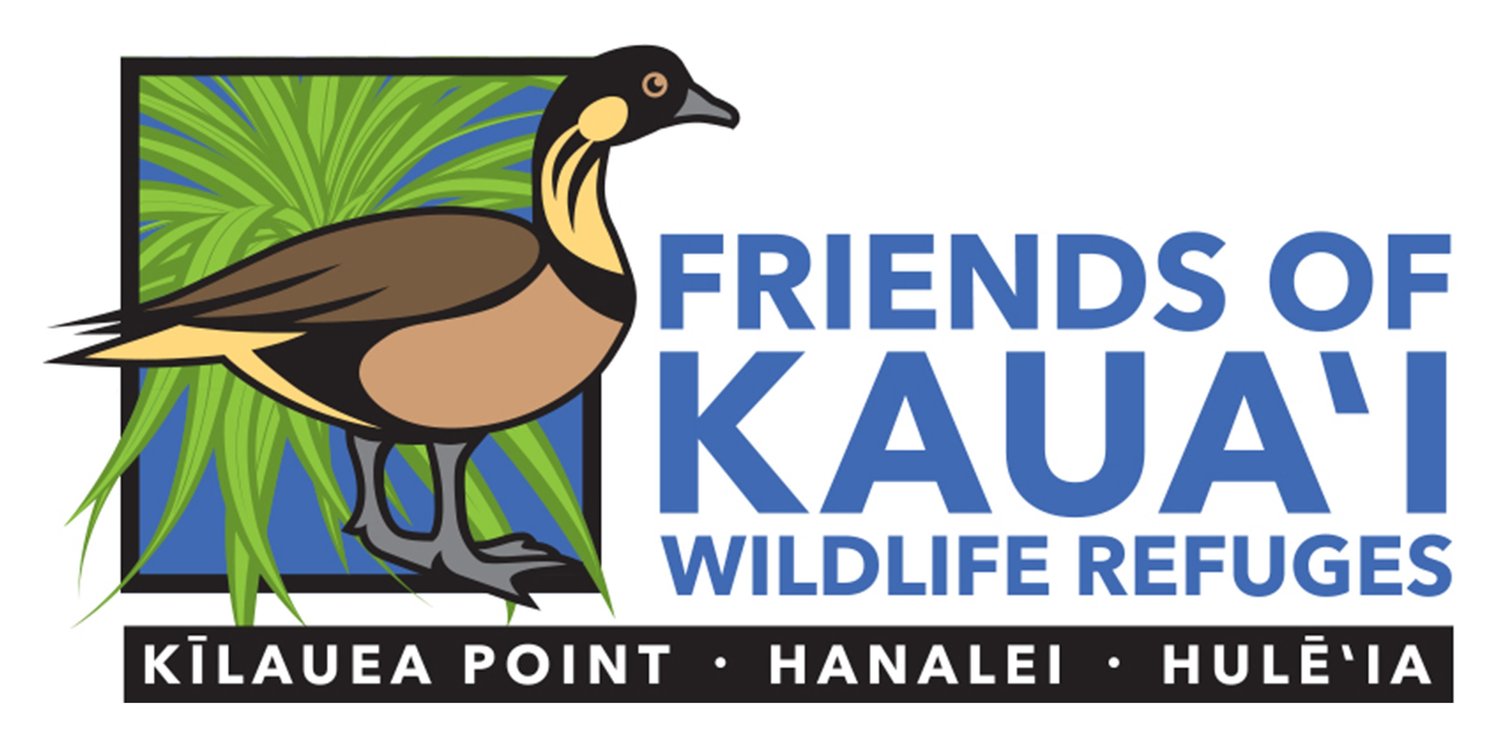Wildlife Spotlight: ʻaʻo
Fall on Kauaʻi means lights out for our wildlife – in particular, the ʻaʻo, or Newell’s shearwaters. We’re very fortunate to live in a place where many of our community members understand and value the delicate balance that exists between a healthy ecosystem and the vitality of some of its most vulnerable inhabitants. The impacts of humans have caused a serious decline in the population of these critically threatened seabirds. However, thanks to awareness and our collective kōkua, we know that, together, we truly can make a difference.
‘Aʻo nest on the steep slopes and cliffs of the mountains of Kauaʻi, within burrows they dig with their beaks and feet that are similar to those of their coastal “cousins” the ʻuaʻu kani (wedge-tailed shearwater). It is hard to estimate the impact these birds have had upon our island ecosystem over thousands of years, as they fertilize our native forests with their rich guano while traveling to and from their nesting sites.
‘Aʻo are relatively small seabirds, typically weighing less than a pound and measuring just 13 inches in length. Their upper body is black with a brown tinge and their lower body feathers are white. The dark feathers on the face extend to just below the eye and are sharply separated from the white throat, and their underwings are mainly white with a dark border. The bill is dark grey or brown and the legs and feet are a dark pale pink.
ʻAʻo have a very distinctive cry, which is often described as a braying donkey, and it gives them their name in ʻŌlelo Hawaiʻi. Enjoy a clip of their vocalizations, within the November 2024 National Wildlife Refuge Minute.
‘Aʻo spend much of their lives at sea, returning to land only during their breeding season, which begins each April. Like most seabirds, they will lay just one egg per season. Then both parents will incubate the egg and work together to feed the fluffy, gray hatchling by regurgitation. ‘Aʻo parents will forage across hundreds of miles of open ocean, capturing and eating squid and small fish. They will dive into the water from the air and then swim underwater on partly opened wings to depths of up to 150 feet. The ʻaʻo will then return to their burrows at dusk to feed their chick.
The ʻaʻo fledglings will make their maiden flight out to sea under the night sky between October and early December and will remain there until they are ready to mate. When they are three to four years old, they will navigate back to their original hatch site using just the stars and geographical surroundings to guide them, as they return to our island for their first breeding season.
Each year, collisions with powerlines kill ʻaʻo traveling to and from their nest burrows. Young birds heading out to sea for the first time can also become attracted by the night-time artificial lighting of playing fields, hotels, resorts, streets and homes. They become disoriented and circle the lights until they become exhausted and fall to the ground, where they may be injured or killed by cats, dogs and cars.
Once grounded, ‘aʻo need help to get safely out to sea – and this is where we can assist. The Save Our Shearwaters (SOS) team relies heavily on the general public for initial response. If you find a seabird and are not sure if it needs help, please call the SOS Hotline at 808-635-5117. ʻUaʻu kani also nest in burrows on the ground, so it is best to make sure that the bird needs help before picking it up.
If the bird is in need of care, you can bring it to the nearest Aid Station (or fire station), which is checked daily. Visit Save Our Shearwaters online to view a list of Aid Station locations and for more information on rescuing a bird.
Other Ways to Help:
Turn outdoor lights off from September through December.
Use only downward facing exterior lighting.
Keep cats indoors and dogs on leashes.
Do not feed feral cats or support feral cat colonies.
Keep a clean towel and ventilated cardboard box in your car to be prepared for a bird rescue.
Watch for downed seabirds during morning walks mid-September through mid-December. The disoriented fledglings may be on a walkway, in a parking lot or under bushes and need our kōkua to help get them stabilized and to a safe place to fledge.
Support our Wildlife Rehabilitation Program and the work of Save Our Shearwaters.
For more information and tips on how you can help, please visit:
Save Our Shearwaters Hotline: (808) 635-5117
Friends of Kauaʻi Wildlife Refuges Fallout Season Info
Enjoy this delightful and informative video ONLINE describing how to assist a downed bird.
Photo: Critically endangered ʻaʻo and a SOS aid station, Credit: USFWS, Hob Osterlund, SOS.


